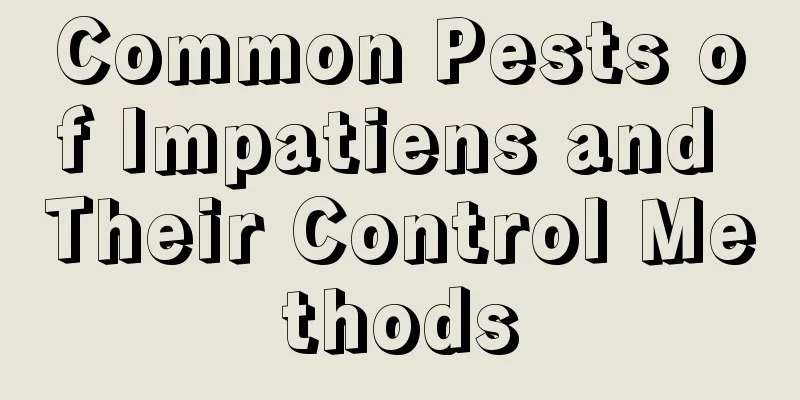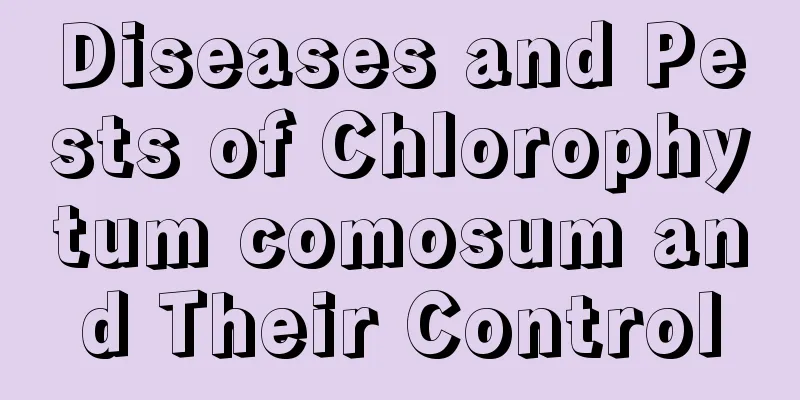Common Pests of Impatiens and Their Control Methods

Common pests of Impatiens: root-knot nematodesPest symptoms: The scientific name of the disease is Impatiens root-knot nematode disease. It is a common and serious disease in both the north and south, mainly damaging the roots. After the nematodes invade the lateral roots or fibrous roots, they form many galls of varying sizes, which are initially yellowish-white and then turn brown. When the galls are cut open, small pear-shaped nematodes, which are female nematodes, are found inside. The affected plants grow slowly, with thin stems and short plants. The leaves gradually turn pale and lose their green color from top to bottom. The leaf edges curl backwards, shrink and wither, and the flower buds turn yellow or do not open. Prevention and control methods: Use chemicals to disinfect the potting soil. Dig holes or circular trenches in the potting soil, apply 5-10 mL of the original solution of the mixture to each pot, immediately cover with soil and flatten it, and plant flowers after fumigation for half a month. You can also use 1000 times diluted 80% dichloroisopropyl ether emulsion, apply 10-15 mL per pot, or 200-300 times diluted 80% dibromochloropropane, apply 400 mL per pot, using the same method as above. Common pests of Impatiens: HawkmothPest symptoms: The larvae mainly eat the leaves, causing incomplete leaves. When the occurrence is serious, they also eat the flowers. Hawk moth morphology: The adult body is brown-green and 40 mm long. The head and both sides of the chest have grayish white marginal hairs; the dorsal abdomen has two silvery white longitudinal lines, and the ventral surface is earthy yellow. The forewings are gray-brown-green, with a wide light yellow-brown oblique band from the apex to the base of the trailing edge, with several black and white stripes inside and outside the oblique band; the hindwings are black-brown, with a gray-yellow horizontal band, and white marginal hairs. Prevention and control methods: During the larval stage, you can use 2000 times diluted 20% pyrethroid emulsifiable concentrate, 90% trichlorfon original medicine, or 1000-1500 times diluted 50% cypermethrin emulsifiable concentrate for prevention and control. Use black light to lure and kill adults during their emergence period. |
<<: Common pests and control methods of cucumbers grown on the balcony
>>: Zephyranthes pests and control methods
Recommend
How to graft Cornus officinalis
Advantages of Grafting Propagation of Cornus offi...
Common pests of dragon blood tree and their control methods
Red Spider Symptoms Due to the dry environment, i...
How to raise Rhododendron chinense
1. Breeding environment 1. Soil: It likes slightl...
Can violets be grown hydroponically?
Can violets be grown hydroponically? Violet is a ...
Do sunflowers like the sun?
Sunflowers love the sun Sunflowers love the sun v...
What kind of trees are suitable for the yard? What kind of trees are suitable for the yard?
The yard is suitable for planting greening trees,...
Does Yunnan purple bougainvillea bloom frequently?
Yunnan Purple is known as the leader among bougai...
The difference between dragon claw and aloe vera
1. Different stems Dragon claw, also known as arb...
What are the different varieties of cactus?
type: Leaf Usually a shrub or tree. The stems are...
How to grow succulent spider plants and what to pay attention to
Growth habits of succulent spider plants Succulen...
What flowers are suitable for growing in Baotou? What are the city flowers and trees?
1. Climate characteristics of Baotou Baotou has a...
When is the best time to repot bonsai? What is the best month to repot bonsai?
Bonsai repotting time Bonsai needs to be repotted...
Cutting propagation method of long tube flower
time The best time for cutting propagation of lon...
How to take care of the newly bought Hylocereus
1. How to take care of the cycads after buying th...
What to do if there are insects on the leaves of gardenia
1. Aphids 1. Introduction: It is the most importa...









